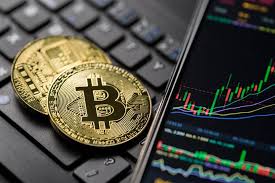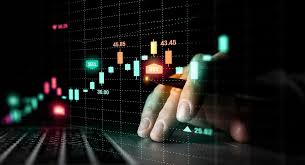The Importance of Crypto Trading Volume in Market Dynamics - Alliance for Action AID
- Home
- The Importance of Crypto Trading Volume in Market Dynamics
Jun 13 2025
The Importance of Crypto Trading Volume in Market Dynamics

The Importance of Crypto Trading Volume in Market Dynamics
In the ever-evolving landscape of cryptocurrency, one term that frequently emerges in discussions among traders and analysts is “trading volume.” Understanding Crypto Trading Volume is fundamental for anyone seeking to navigate the turbulent waters of digital currencies. The trading volume represents the total amount of a cryptocurrency traded over a specific period, typically measured in the daily or hourly context. It acts as a key indicator of market activity, liquidity, and potential future price movements. For those interested in a deeper dive, you can visit Crypto Trading Volume http://fezonline.net/forum/viewtopic.php?p=61507 to explore various discussions surrounding this topic.
What is Crypto Trading Volume?
Crypto Trading Volume refers to the quantity of a specific cryptocurrency that has been traded within a designated time frame. This volume can reflect the number of transactions or the total amount of currency exchanged (i.e., the sum of all transactions during that period). It serves as an essential metric for traders and analysts, offering insights into market trends and investor sentiment. Typically, higher trading volumes are synonymous with increased market activity and interest, while lower volumes may indicate stagnation.
Why is Trading Volume Important?
The significance of trading volume in crypto markets cannot be overstated. Here are several key reasons why trading volume matters:
- Market Sentiment: Trading volume can provide insights into market sentiment. A surge in trading volume often accompanies spikes in price, indicating growing interest and willingness among investors to engage with the asset.
- Liquidity: Higher trading volumes typically suggest greater liquidity, making it easier for traders to buy and sell assets without significant price fluctuations. This liquidity is crucial for maintaining a stable market environment.
- Price Movement: Traders often use trading volume as a tool to predict price movements. Significant price changes accompanied by high trading volumes often suggest a more sustainable trend, while changes in price with low volume may indicate potential reversals or weak movements.
- Support and Resistance Levels: Technical analysts often incorporate volume into their strategies to identify support and resistance levels. A breakout past a resistance level with high volume is generally seen as a strong signal, while a similar movement with low volume may suggest a lack of conviction among traders.
Analyzing Crypto Trading Volume
Analyzing trading volume involves looking beyond just the numbers. Traders often compare the current volume against historical averages to determine whether a particular price movement is significant or not. One common method is the “Volume Moving Average,” which helps to smooth out fluctuations and offer a clearer picture of trends over time.
Additionally, volume can be examined alongside price action. For instance, if the price of a cryptocurrency is rising but the volume is decreasing, this may signal a weak trend. Conversely, if the price is rising alongside increasing volume, the trend is often deemed stronger and more sustainable.

Volume Analysis Techniques
There are several techniques traders and analysts use to interpret trading volume effectively:
1. Volume Oscillator
The Volume Oscillator measures the difference between two volume moving averages. This tool can help identify bullish or bearish trends based on the crossover points of the moving averages.
2. On-Balance Volume (OBV)
OBV is a technical analysis tool that relates price changes to volume, providing an insight into the strength of price movements. If the volume is high on days when the price closes higher, it indicates buying pressure and is considered bullish.
3. Accumulation/Distribution Line
This indicator balances the closing price’s position relative to the day’s range with volume, helping to understand the cumulative buying and selling pressure.
Factors Influencing Crypto Trading Volume
Several factors can influence crypto trading volume, including:

- Market News: Announcements regarding regulations, technological advancements, or partnerships can lead to significant spikes in trading volume.
- Market Rally or Crash: Bullish trends can attract new investors, increasing trading volume, whereas bearish trends can lead to panic selling and increased trading.
- Market Maturity: As the market matures, broader participation can lead to more consistent trading volumes, as seen with mainstream cryptocurrencies like Bitcoin and Ethereum.
Understanding Volume in Different Market Conditions
How trading volume behaves can differ significantly under various market conditions:
Bull Markets
In a bull market, volume typically rises as more investors enter the market, driving prices higher. The correlation between price increases and volume confirms the trend’s strength.
Bear Markets
Conversely, in bear markets, volume may increase on downside movements, signaling panic selling. A decline in volume during price drops can indicate that sellers are losing strength.
Sideways Markets
In sideways markets, volume often decreases, indicating indecision among traders. Identifying breakout points with accompanying volume is vital for strategy development during these periods.
Conclusion
In conclusion, Crypto Trading Volume is an essential metric that provides traders and analysts with valuable insights into market dynamics. By understanding the implications of trading volume and using various analysis techniques, participants in the crypto market can make more informed decisions. Monitoring trading volume alongside price movements can help identify trends, assess market sentiment, and ultimately improve trading strategies. As the cryptocurrency market continues to evolve, the importance of trading volume will only grow, making it an indispensable aspect of cryptocurrency analysis.
- Open Hours of AFAA: Mon - Fri: 8.00 am. - 6.00 pm.
- Hai Tarawa, Head office, Juba, South Sudan
- +211916165022 , +211 918505019, +211 918505019

Leave A Comment